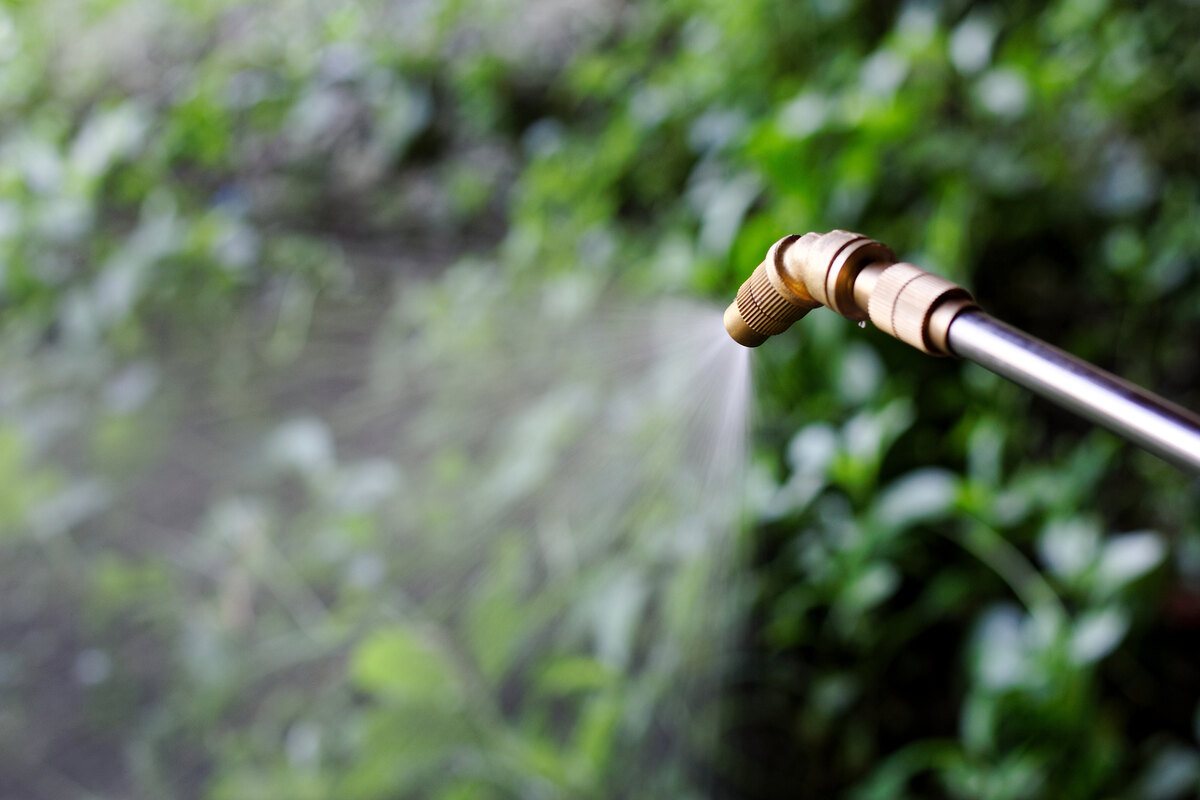
You’ve probably heard of weed killers, but you may not know about pre-emergent herbicides. A pre-emergent herbicide is a weed preventer that stops weeds from growing above the soil by disturbing their growth.
But with pre-emergents, timing is everything. They must be applied before weeds sprout above the soil to be effective. If you’re new to pre-emergents, you’re in the right place. We’ll explain what pre-emergents are, how they work, and how to choose the right one for your lawn.
What is a Pre-Emergent Herbicide?
A pre-emergent herbicide is a type of preventive weed control for lawns. These weed-killing chemicals stop weeds from growing above the soil, so you never see them in your yard. Pre-emergents, sometimes called weed preventers, target the growth of either the root or the shoot, or sometimes both.
Pre-emergents are different from post-emergents since a post-emergent weed killer spray targets weeds that have already sprouted above the soil.
How Pre-Emergent Herbicides Work
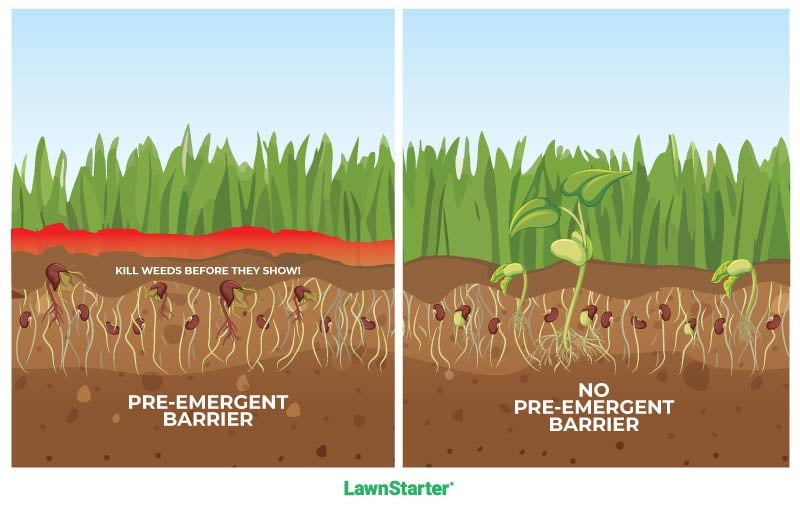
Once applied, pre-emergent herbicides create a chemical barrier over the soil that disturbs weed growth and prevents weed seeds from establishing. It is essential for pre-emergent herbicides to be applied before the weed-growing season. If this lawn weed killer isn’t applied to the soil prior to germination, then you have applied the product too late, and it won’t work.
On average, pre-emergent herbicides last 8 to 12 weeks, but this depends on the product. Check the label for how long the product typically lasts and how often to reapply.
Types of Pre-Emergent Herbicides
Pre-emergent herbicides come in liquid or granular form, each with its own pros and cons. Learn the differences between them below to determine which type of pre-emergent herbicide is best for your yard.
Liquid Pre-Emergent Herbicides
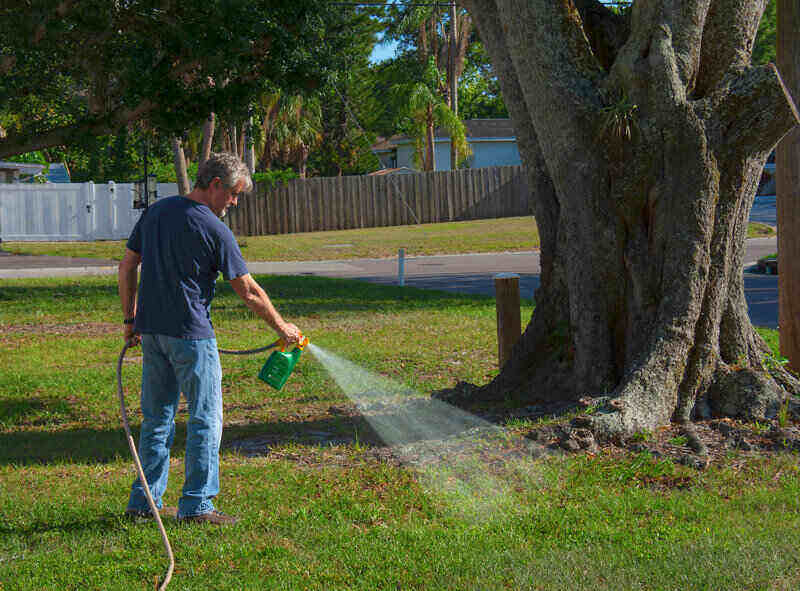
Liquid pre-emergents are easier to spread evenly across your lawn than granules. They also take effect more quickly than granular herbicides.
However, liquid pre-emergents require you to mix the product yourself before you apply. You will need to measure the right amount and mix the liquid pre-emergent with water.
You will also need a sprayer to apply a liquid pre-emergent on your yard. Some pre-emergent herbicide products come with a sprayer that connects to your hose as part of the product. If not, you will need to purchase a sprayer separately.
Granular Pre-Emergent Herbicides
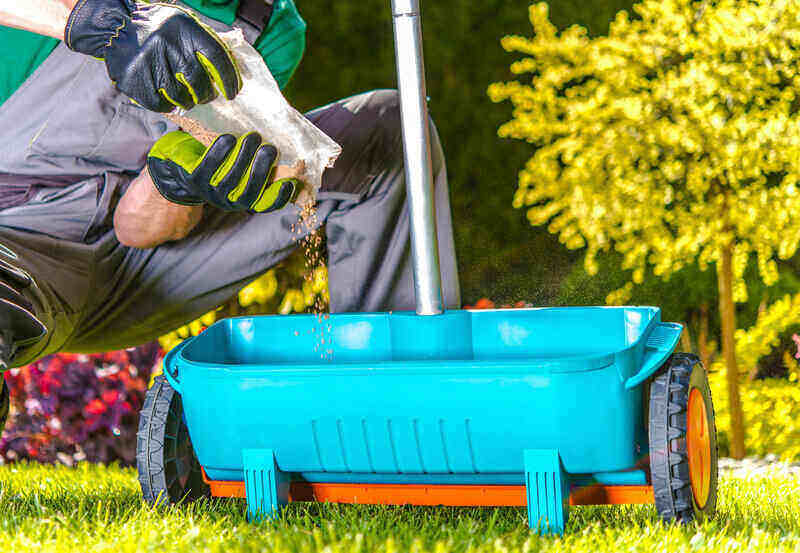
Granules activate where they sit, so they are limited to the spot where they land. Also, because they have to break down first, granular pre-emergent herbicides don’t work as quickly as liquids.
Fortunately, though, granular herbicides are easier to measure, and you don’t have to mix them before usage.
You will need a spreader to distribute the granules on your lawn. The spreader can be either a push spreader or a handheld one.
See Related: How to Apply Pre-Emergent Herbicides
What Weeds Do Pre-Emergents Control?
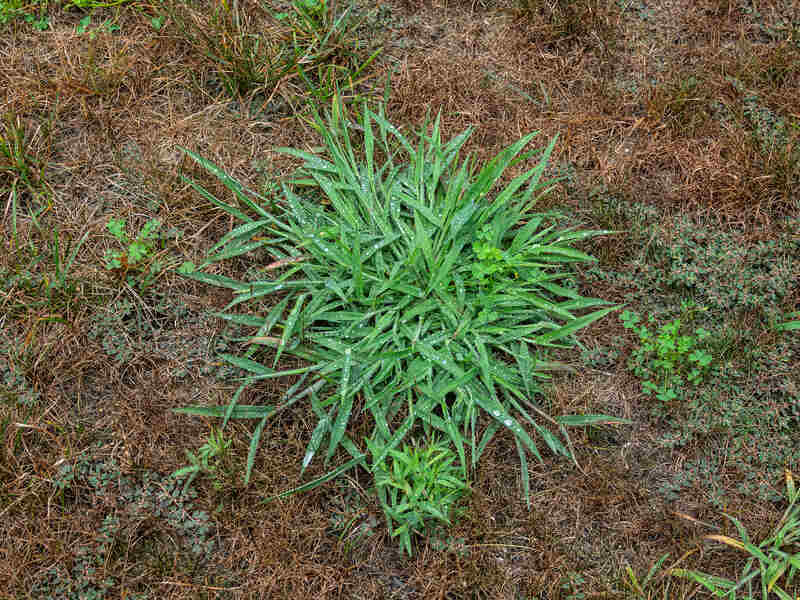
Pre-emergents target a variety of broadleaf and grassy weeds. Apply in spring and fall to control both summer and winter weed types. Pre-emergents work best on annual weeds and grassy weeds but may not be as effective on perennials.
Here are some of the most common spring-germinating weeds that pre-emergents prevent:
- Crabgrass (Digitaria sanguinalis)
- Dandelions (Taraxacum officinale)
- Ragweed (Ambrosia artemisifolia)
- Yellow foxtail (Setaria glauca)
- Sandbur (Cenchrus longispinus).
When you apply pre-emergent herbicides in the fall, this weed control chemical will target winter annual weeds, such as these:
- Chickweed (Stellaria media)
- Persian speedwell (Veronica persica)
- Annual bluegrass (Poa annua)
- Cheatgrass (Bromus tectorum)
There are even some types of weeds that need pre-emergent weed control in both the summer and the winter since they can be both summer or winter annuals, biennials, or perennials.
- Clover (Trifolium repens)
- Spurge (Euphorbia spp.)
Fall pre-emergent herbicides prevent winter annual weeds, while spring pre-emergent applications stop summer weeds.
See Related:
- How to Get Rid of Cheatgrass
- How to Get Rid of Clover and Not Kill Grass
- How to Get Rid of Crabgrass in Your Yard
- How to Get Rid of Dandelions
When to Apply Pre-Emergents
It’s essential to apply pre-emergent herbicides at just the right time. Applying pre-emergents too early or too late will render them ineffective, so timing is key for successful preemptive weed control.
- Spring: Apply pre-emergents when the soil temperature reaches 50-55 degrees Fahrenheit.
- Fall: Apply pre-emergents when the soil temperature falls to 70 degrees Fahrenheit.
Herbicides that are applied too early may break down before they have a chance to stop weed seeds from germinating, but a herbicide that is applied too late won’t have any effect at all.
See Related: When to Apply Pre-Emergent Herbicide
How to Choose the Right Pre-Emergent for Your Lawn

With so many herbicide products available on the market, it’s difficult to know which one is right for your yard.
Here are some factors you should consider:
- The size of your yard
- What type of weeds you have (annual or perennial)
- How much time you have for prep work
- Organic vs. chemical
- Non-selective vs. selective
If you are concerned about your plants being harmed by these lawn weed killers, you might want to consider a selective pre-emergent herbicide that targets only specific weeds.
- Selective pre-emergent herbicides target only broadleaf or grassy weeds (or both) but should not cause harm to other plants. Selective pre-emergents are most commonly used by homeowners since they target weeds but preserve plants and grass.
- Non-selective pre-emergent herbicides aren’t choosy about which plants they target, so they’ll harm both your prize plants and weeds alike. Never use non-selective weed preventers on your lawn. Only use them in areas where you want to kill all the vegetation in a designated area.
FAQ About Pre-Emergent Herbicides
It’s best if you wait a day or two to mow your lawn after an herbicide application.
A pre-emergent should not harm your lawn unless you apply an excessive amount of herbicide to your yard or if you apply the wrong type of herbicide. To avoid this, make sure to carefully read the label’s instructions.
Read the label for how long you should keep off the lawn after a weed treatment, but it’s usually at least 24 hours after application. Make sure to keep children and pets away from the treated area until you have the opportunity to irrigate your yard.
The Best Way to Prevent Weeds
When it comes to lawn weed control, it pays to stay on top of your lawn care schedule. Pre-emergent herbicides stop weeds before they start, reducing the amount of time you spend pulling up weeds. So, give your yard a timely application in spring and fall and enjoy your weed-free view.
If you’d rather let someone else determine when and how to keep your yard weed-free, hire a lawn treatment professional near you for timely weed control and other lawn care services.
Sources:
Main Image Credit: Kritchai / Adobe Stock